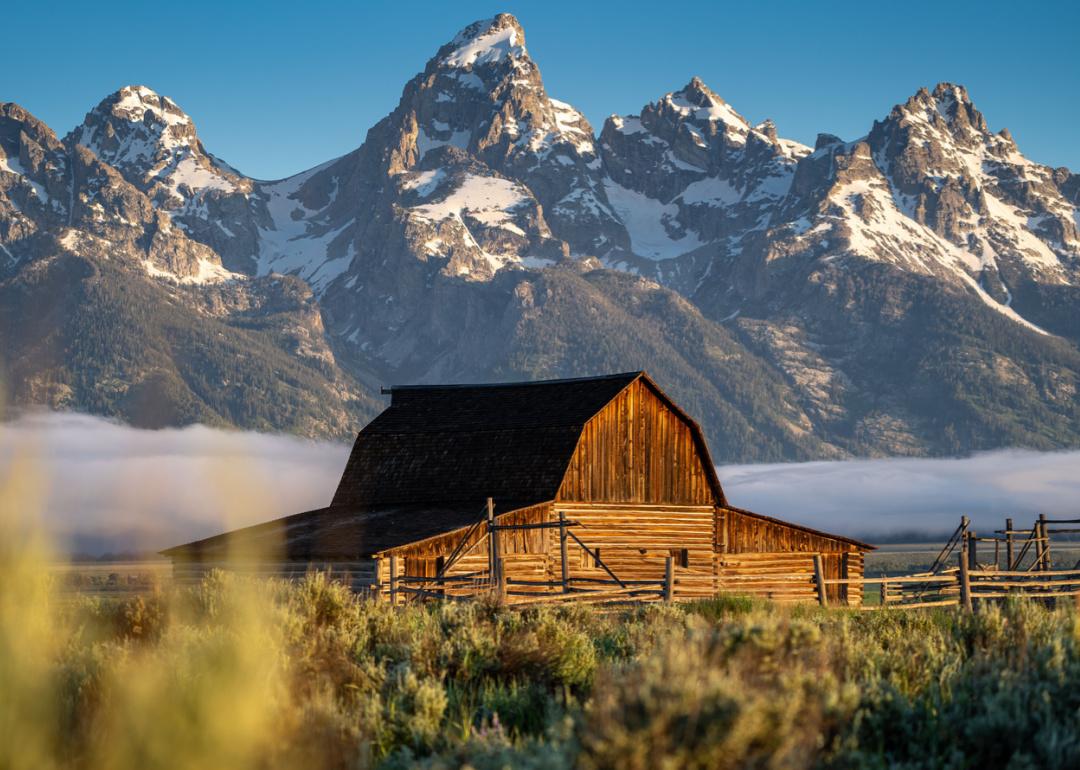States looking to end daylight saving time changes

Zephyr_p // Shutterstock
States looking to end daylight saving time changes
Hand changing the time on alarm clock.
Daylight saving time has become a recurrent topic in public debates over the last few years. For over a century, Americans across the country have been used to annually changing their clocks an hour forward in March to observe daylight saving time and an hour backward in November to standard time. Exceptions to this adopted norm include residents of Hawaii and most of Arizona, where standard time is permanent throughout the year.
The 1966 Uniform Time Act brought about daylight saving time as we know it, although the dates for “springing forward” and “falling backward” have changed over the years. States could opt out of daylight saving time, according to the act. However, should they decide to observe it, they must adhere to the federally mandated schedule.
Before the 1966 law, the U.S. did observe daylight saving time, known then as “war time.” During World War I, as a temporary measure to reduce energy consumption, the Standard Time Act called for additional daylight hours in order to conserve needed resources. When the U.S. entered World War II, resource allocation again became an issue, and a national daylight saving time was instituted—only to be revoked at the war’s end.
In recent years, several lawmakers have sought to do away with the practice of changing clocks twice a year. As of 2022, state legislatures nationwide have considered more than 450 pieces of legislation to make daylight saving permanent year-round once federal law authorizes it, according to the National Conference of State Legislatures.
On the federal level, the Senate, through unanimous consent, passed the Sunshine Protection Act on March 15, 2022. The legislation would permanently change time in the U.S. to daylight saving time should the House pass it and send it to President Joe Biden. States that permanently observe standard time would not be compelled to switch under the legislation.
According to a March 2022 CBS News poll, 46% of Americans prefer permanent daylight saving time, while 33% prefer permanent standard time. The remaining 21% simply favor the status quo.
Drawing on news and government sources, Stacker investigated which states seek to do away with the annual back-and-forth and make daylight saving time permanent.
You may also like: 50 terms with origins in rural America
![]()

Bob Pool // Shutterstock
Alabama
Gazebo and canoes on the shore of Mobile Bay at sunset.
On April 20, 2021, Alabama’s Senate unanimously passed bill SB388, which authorized the state to permanently observe daylight saving time once Congress amended federal laws to allow its year-round observation. The state House of Representatives also gave its green light to the bill, passing it 93-1 on May 6, 2021. Alabama Gov. Kay Ivey signed the bill on May 13, 2021.

Peter Kunasz // Shutterstock
Colorado
Rocky Mountains in autumn.
On June 2, 2021, Colorado Gov. Jared Polis signed the Daylight Saving Time Year Round act into law. The legislation, which would make daylight saving time the standard time in-state year-round, had the backing of the House of Representatives, which voted 50-12 for the bill, and the Senate, which voted 27-7 in favor. However, the law would come into effect only when federal law allows states to observe permanent daylight saving time, and at least four other states in the Mountain Standard Time zone also make daylight saving time permanent.

Real Window Creative // Shutterstock
Delaware
Aerial view of Wilmington at dawn.
In 2019, Delaware’s House and Senate passed Senate Bill 73, which would make the observation of daylight saving time in the state permanent all year round by empowering the state’s secretary of transportation to place Delaware in the Atlantic Standard Time zone—one hour ahead of the Eastern time zone—thus allowing the state to use existing federal provisions to observe daylight saving time as standard time permanently. The law, however, specifies that the governor should make the request only when the neighboring states of Pennsylvania, New Jersey, and Maryland enact similar laws.

Zhukova Valentyna // Shutterstock
Florida
Footbridge to sunrise on beach.
Florida’s state legislature passed HB 1013: Daylight Saving Time in 2018, demonstrating legislative intent to change time in the state permanently to daylight saving time. Then-Gov. Rick Scott signed the legislation into law on March 23, 2018. The law, however, is a trigger law, authorizing the change only when federal law is amended to allow states to keep all-year-round daylight saving time.

Sean Pavone // Shutterstock
Georgia
Tallulah Gorge in autum.
Georgia Gov. Brian Kemp signed State Senate Bill 100 into law on April 21, 2021. Passed by an overwhelming majority in both the House and Senate, the law mandates that daylight saving time be standard year-round in Georgia once federal laws are amended to allow states to do so. The bill’s sponsor, Republican Rep. Wes Cantrell of Cherokee County, told WSB-TV the law is intended to help reduce car accidents and crime in the state.
You may also like: America’s ambitious bet on wildlife crossings

OLya_L // Shutterstock
Idaho
Sawtooth mountains of Idaho in the evening light.
Idaho spans two time zones, with southern portions of the state observing Mountain Standard Time and northern parts following Pacific Standard Time. State Senate Bill 1267, passed unanimously by the state legislature and signed by Gov. Brad Little on March 16, 2020, will make daylight saving time permanent throughout the year in all parts of the state following Pacific Standard Time. However, the change is contingent on federal law being amended to facilitate the shift and Washington state also moving to permanent daylight saving time.

Kelly vanDellen // Shutterstock
Kentucky
Sun over rolling field at dawn.
The Kentucky House of Representatives passed a resolution on March 29, 2022, urging the U.S. House of Representatives to pass the Sunshine Protection Act of 2021 and President Biden to sign it into law. The resolution passed in Kentucky’s state house does not, however, set a trigger for the state to adopt daylight saving time year-round once federal law allows states to choose to do so.

Xiu Yu Photography // Shutterstock
Louisiana
Swamps with bald cypress, spanish moss, and birds.
On June 9, 2020, Louisiana Gov. John Bel Edwards signed a bill making daylight saving time permanent into law. According to the law, once federal law is amended to permit states to keep permanent daylight saving time, Louisiana would follow suit permanently. The bill’s sponsor, Republican Rep. Dodie Horton, told WAFB-TV that the law could help people get to their homes before dark and potentially reduce crime.

Sean Pavone // Shutterstock
Maine
Portland Breakwater Light.
In 2019, Maine’s legislature passed a bill making daylight saving time permanent in the state once the federal government allows states to do so. The bill, which came two years after a failed bill in 2017 to move the state to the Atlantic time zone, was enacted without the governor’s signature. The law mandates that once the federal government greenlights permanent daylight saving time, Maine’s secretary of state would bear the authority to begin the switch.

Dan Thornberg // Shutterstock
Minnesota
Canoe on lake at sunrise in autumn.
In a surprising demonstration of bipartisanship, Minnesota passed Senate Bill SF149 and its companion bill, HF72, in the House. The bills mandate that once the federal government authorizes states to follow yearlong daylight saving time, the state should do so.
You may also like: The most financially damaging cybercrimes in your state

Sean Pavone // Shutterstock
Mississippi
Aerial view of Capitol building and Jacksonville skyline in evening.
Mississippi’s state legislature passed a bill in 2021 making daylight saving time permanent throughout the year. However, like similar legislation in other states, this law is a trigger law that comes into force only when the U.S. code is amended to permit states to keep daylight saving time throughout the year.

Bill45 // Shutterstock
Montana
Sunrise over lake in Glacier National Park.
State legislators in Montana passed a bill in 2021 to change the standard time in the state from Mountain Standard Time to Mountain Daylight Time permanently once the federal government authorizes it. Like bills in Delaware and Idaho, the legislation stipulates that the change should come into effect only when four other states, including Montana, enact a similar shift. Gov. Greg Gianforte signed the bill into law on May 10, 2021.

Almal3xia // Shutterstock
Ohio
Sunrise on Greene County farm.
Ohio’s House of Representatives adopted a resolution on Sept. 9, 2021, urging Congress to pass the Sunshine Protection Act and institute permanent daylight saving time nationwide. Like the legislation in Kentucky, the resolution only calls upon Congress to pass the bill without specifying any particular measures the states should take.

Bill45 // Shutterstock
Oregon
Portland sunrise over St. Johns bridge and Mt. Hood.
Oregon’s state legislature passed a bill in 2019 that would end the annual back and forth between standard time and daylight saving time in the state once the federal government permits states to observe daylight saving time permanently. According to the bill’s text, the change is contingent on California and Washington state also making daylight saving time permanent. Malheur County would not be subjected to the changes because it lies in a different time zone than other parts of the state.

Sean Pavone // Shutterstock
South Carolina
Charleston waterfront park fountain at dawn.
South Carolina’s state legislature passed a bill in 2020 that made year-round daylight saving time permanent in the state. However, the shift to permanent daylight saving time requires Congress to amend laws to permit states to do so. The bill was signed into law by Gov. Henry McMaster. In 2023, further legislation was enacted that would make Eastern Standard Time permanent as of 2 a.m. on the second Sunday in March 2024.
You may also like: How to tell you’re being phished and 9 other common online scams to watch out for

ZakZeinert // Shutterstock
Tennessee
Sunrise over the Great Smoky Mountains.
Tennessee’s state legislature passed SB1100 and its companion bill HB0247, which were then signed into law by Gov. Bill Lee in 2019. According to the law, should the federal government authorize states’ observance of permanent daylight saving time, Tennessee would do so throughout the year.

Wisanu Boonrawd // Shutterstock
Utah
Arches National Park sunset.
In 2020, legislators in Utah passed SB 59, which makes observation of daylight saving time permanent statewide upon federal approval. The shift to year-round daylight saving time is also contingent on four other western states, besides Utah, doing the same.

Albert Pego // Shutterstock
Washington
Seattle skyline and Mt Rainier at sunset.
Washington Gov. Jay Inslee signed HB 1196 into law in 2019, after it was passed by the state legislature. According to the bill’s provisions, the state would permanently observe Pacific Daylight Time once Congress amends federal law to allow states to do so.

melissamn // Shutterstock
Wyoming
Barn at sunrise in Grand Teton National Park.
In 2020, Wyoming’s state legislature passed HB0044, which would make Mountain Daylight Time the standard time in the state year-round once states can have permanent daylight saving time under federal law. The change is, however, contingent on not less than four western states, including Wyoming, making the shift to permanent daylight saving time.